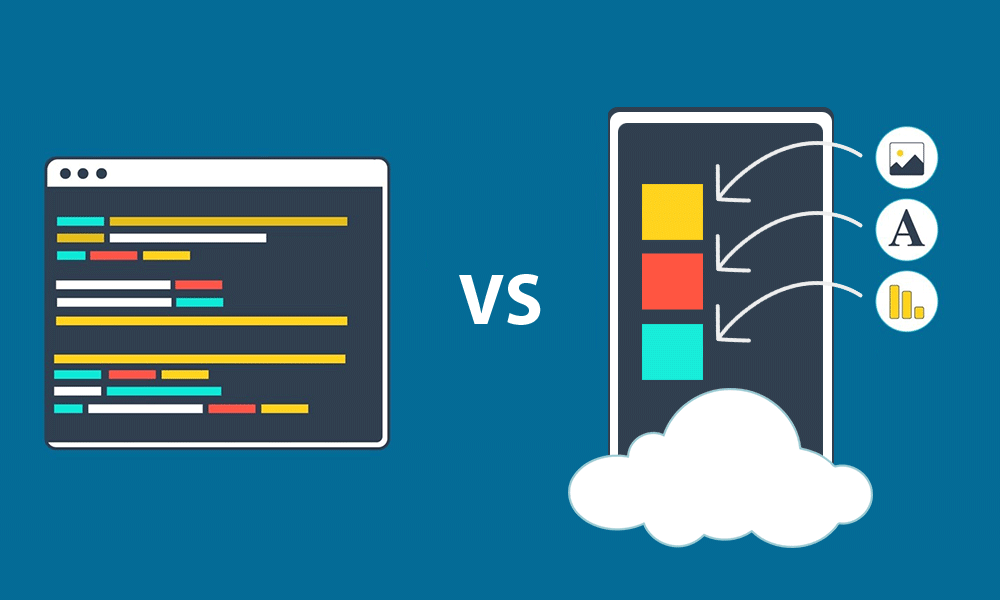The world is slowly digitalizing itself by having more and more of its information transformed into data that travels through networks using bits and bytes.
But behind those digitalized data, platforms and hardware, there are people who created them.
There are people who put the things where they should be, so end-users can experience the seamless integration, anywhere they are in the world.
These people are programmers. They are the developers who work behind the screen, fiddling with inhuman languages in order for computers to understand their intention. These developers' job isn't an easy one, but highly sought-after due to the increase needs of digitalized data and the growing internet.
With the high demands that surpass the headcounts of developers, going beyond their capacity and timeframe, the software industry needed to change.
And that change is to venture onwards, where no-coders with little-to-no knowledge of programming, can become developers themselves.
One of the most disruptive approach, is through free cloud-based software, and a jolt of low-code no-code (LCNC) software promises.

In the conventional and the more traditional means of software development, programmers are required to write lines of code to create the functionality and capabilities desired in a computer program or application.
This process requires them to have in-depth knowledge of computer languages, as well as development environments, in order to create a successful deployment and testing protocols.
Low-code no-code is a visual software development environment that allows people to simply drag-and-drop application components, in order to connect them together, and easily create a mobile or web app.
This modular approach allows professional developers to work more quickly in build applications, by relieving them of the needs to write code line by line. But at the same time, it also allows "citizen developers" to fiddle with those developers' job, and create apps they want in a What You See Is What You Get-like manner.
This is done with LCNC in simply encapsulating all conventional software development, by giving the platform with visual tools that can be easily manipulated.
LCNC platforms typically feature reusable components and drag-and-drop tools that represent particular steps or capabilities that a user can link together in the platform to create the desired computerized workflow. And these platforms generally have features that allow for experimenting, prototyping, testing and deployment.
Simply put, these platforms enable users to create applications as if they were drafting a flowchart rather than writing line-by-line codes for each desired function and capability. The interface can have draggable visual blocks (which contain actual code), that can be moved to wherever in the flowchart to create applications.
First, is the 'low-code'. This is a visual approach to software development that abstracts and automates every step of the application lifecycle to enable rapid delivery of a variety of software solutions. It breaks the traditional silos of business and IT to promote continuous collaboration.
Increased demand for software and a shortage of skilled developers have propelled the adoption of these low-code development platforms to the forefront.
Low-code software can be fully customized with a minimal amount of programming. So instead of taking weeks or months to develop a custom application, users of low-code software can finish the job in just hours or days. While low-code software still requires coding, the "low-code" approach makes it faster and cheaper to develop an app than ever before.
No-code software, on the other hand, takes the low-code concept to another level, by allowing literally anyone to develop an application without any programming knowledge whatsoever.
And here and together, LCNC platforms enable business analysts, office administrators, small-business owners and other people who are not software developers to build and test applications.
Given the way in which these LCNC platforms work, this type of app development work is sometimes called click development or point-and-click development.

Through LCNC's user-friendly graphical user interface (GUI), non-programmers can drag-and-drop components, easily use and embed third-party application program interfaces (APIs), and hook them together to be tested. Because LCNC is modular, it includes 'modules' or 'blocks' that can be rearranged and repeatedly tested until the app works as expected.
The growth of this LCNC platforms has proliferated due to a lack of skilled software developers and the need to improve turnaround time for development projects so business problems can be solved quickly.
As a result, LCNC transforms the software industry.
LCNC has the capacity to make the software industry more ubiquitous at each coming day, by easing the whole process of software development.
With demands that keep on getting higher, the software industry needs to gear itself to enable faster development.
Because LCNC can eliminate the needs of enterprise software customizations or hiring a development house to program an application entirely from scratch, the software industry experiences a major disruption.
Battle-hardened and experienced software developer could feel threatened. For a good reason, LCNC allows those developers to stay in the game, but by making them sitting on the sidelines. With non-programmers doing programmers' work, LCNC is making the professionals a substitute.
But it should be noted that as popular and robust these LCNC tools and platforms have become and can be, no LCNC software is going to replace professional developers, as long as humans empower the industry with their "human touch".
Even when most organizations have been digitizing their business processes, and making themselves more capable with LCNC, changing the workflow is easier said than done.
LCNC excels when it comes to tackling software development through home computers or PCs. But building large-scale and enterprise-class apps that power an entire organizations require skilled programmers that don't drag-and-drop their queries.
While LCNC can create apps with greater ease, a human touch is needed to customize functions so they can properly work on existing systems, for example. A/B testing, tweaks, optimizations of codes, managing computing resources, debugging, maintaining privacy of sensitive information and so forth, is still a job for humans.
By providing the GUI, LCNC essentially make computers to understand people, rather than people to understand computers like before. But by breaking down complexity, LCNC is adding just another layer of "interpreter" that creates new complexity elsewhere.
So here, LCNC can indeed be the future of coding. But it won't be the future of the software industry, at least yet.